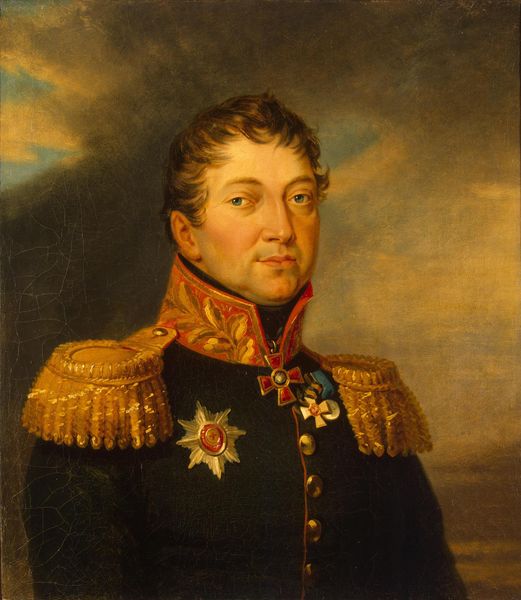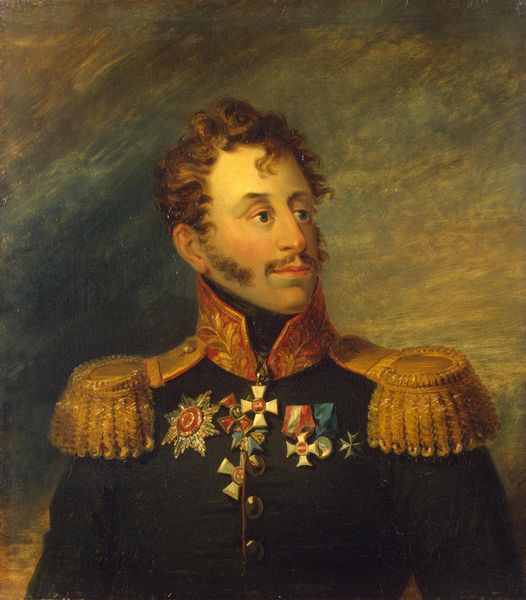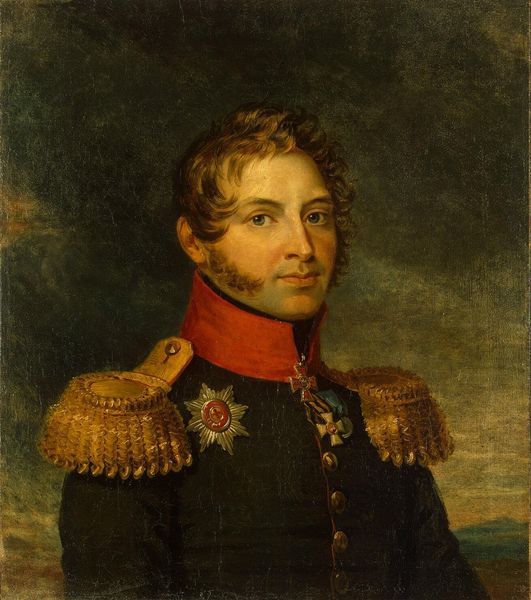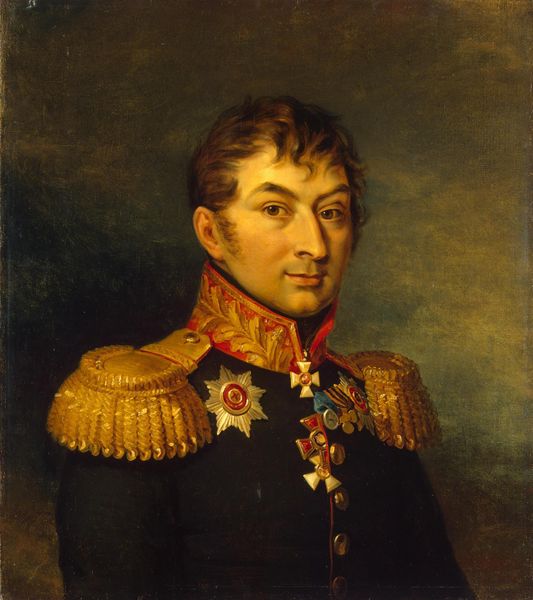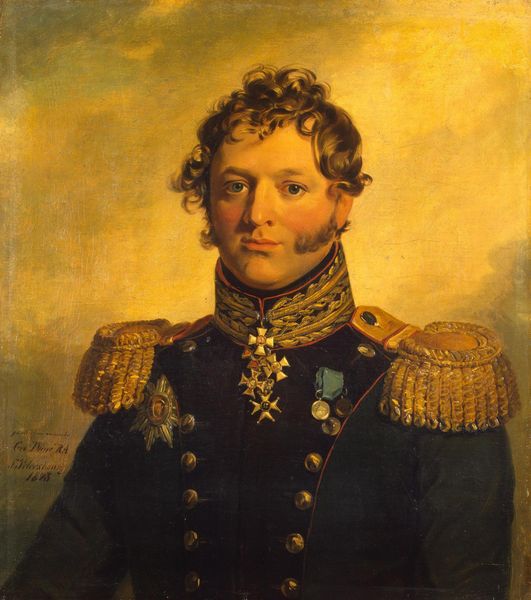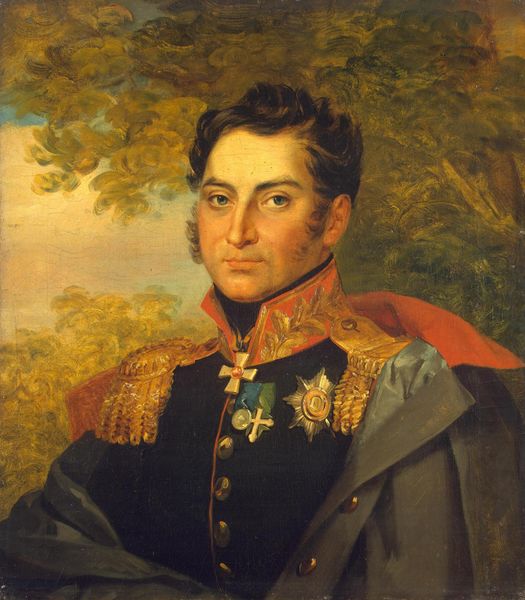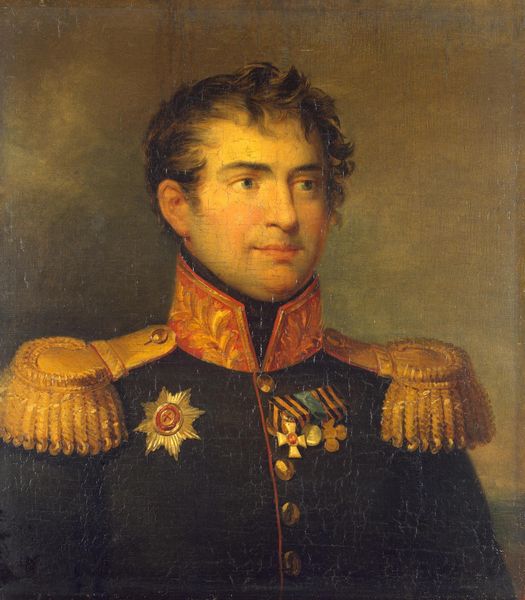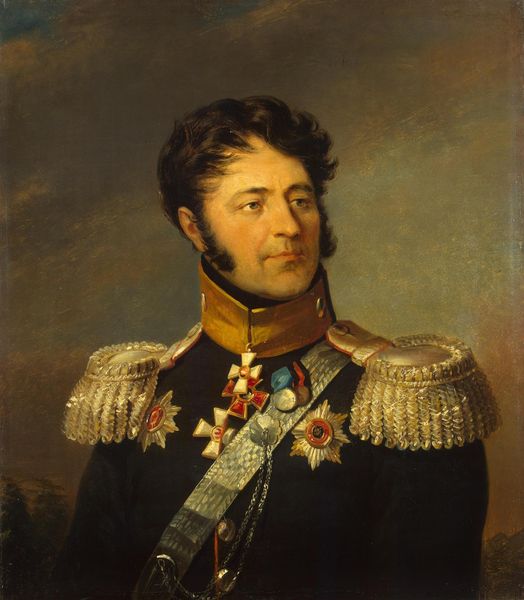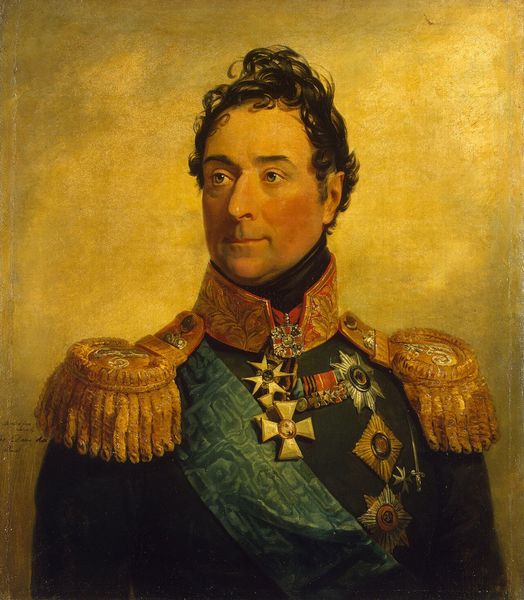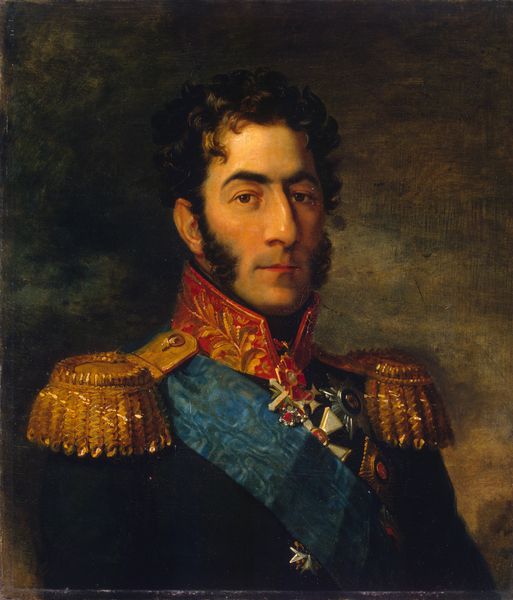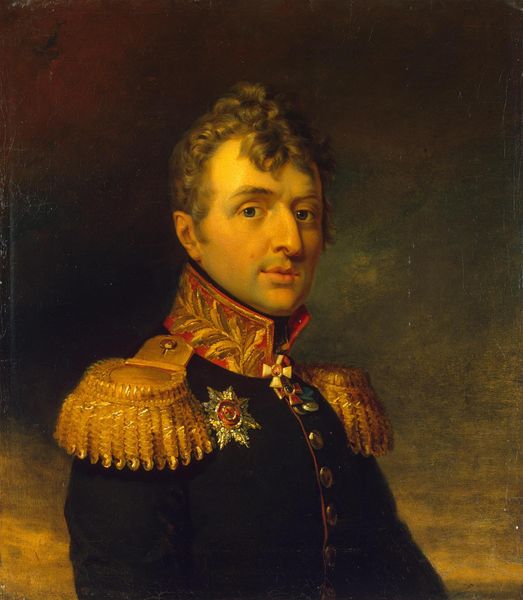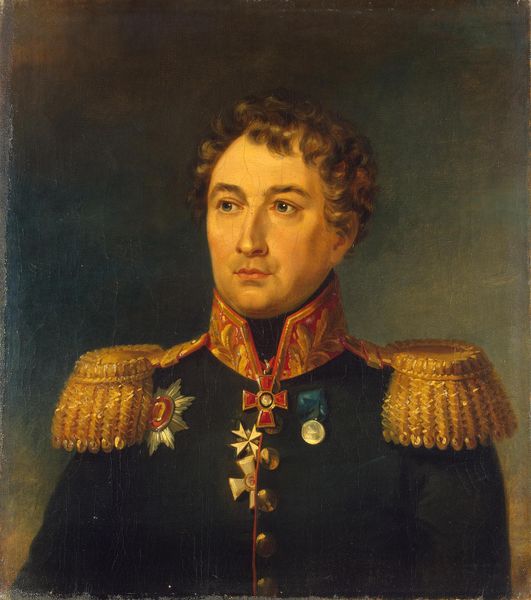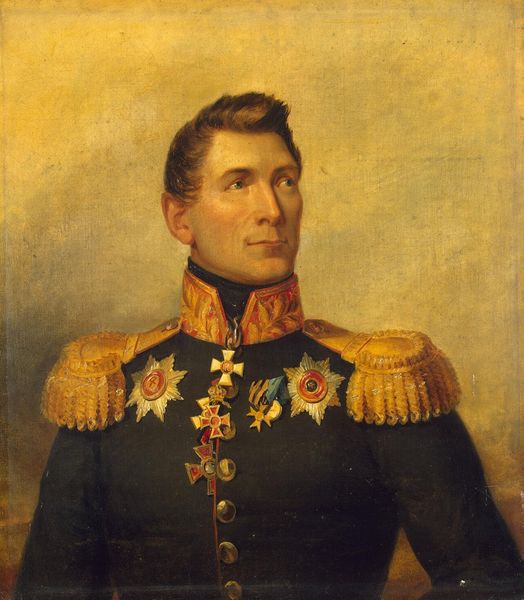
painting, oil-paint
#
portrait
#
painting
#
oil-paint
#
romanticism
#
history-painting
Copyright: Public domain
Curator: I am struck by the sheer weight of the adornments. Look at the epaulettes, dripping gold fringe! What is your impression, Editor? Editor: Solemn, yet… idealized. His gaze is direct, but the soft brushwork and the romantic landscape in the background certainly lend an air of heroic wistfulness to it. Curator: This portrait is identified as "Leopold I, King of the Belgians." Painted around 1825 by George Dawe, an English portrait artist celebrated for his depictions of Russian military figures. This work now resides at the Hermitage Museum in Saint Petersburg. Dawe seems to have built a reputation creating images of power. The oil paint used is remarkable. The rich, dark pigment and impasto contribute to a palpable sense of material substance and status. Consider the cultural context. The Napoleonic Wars had just concluded, leaving an atmosphere rife with national pride and the desire for strong leadership. Editor: Yes, and note how the composition guides the eye directly to Leopold’s face—the slight asymmetry, the play of light and shadow across his features. Even the arrangement of the medals feels deliberate, drawing our attention and suggesting various meanings. The background, although secondary, sets an emotive, atmospheric stage—almost as if to narrate some unfolding epic event. Curator: The manufacturing and sourcing of those paints, though— where did Dawe get those pigments? Who prepared them? The conditions in which the painting was produced and its likely purpose as a diplomatic gift speak to broader power structures at play here. This is not merely an individual, but an industrial project! Editor: An industrial project of image-making, certainly! And the artist employs certain pictorial tropes of power to amplify it. By framing the subject so grandly, this work elevates Leopold to the symbolic role he inhabits within his cultural moment. Curator: Interesting. And with Dawe acting like a tool within all the process. Well, looking at this through the lens of material and labor truly exposes hidden aspects of its making, which gives me a refreshed point of view on courtly representations of power! Editor: Precisely! I also now appreciate Dawe's technical skills, his control over light and shadow, to have constructed so calculated an impression, that even these other angles became so transparent.
Comments
No comments
Be the first to comment and join the conversation on the ultimate creative platform.
